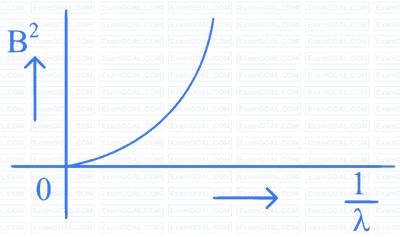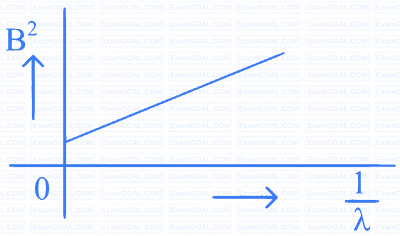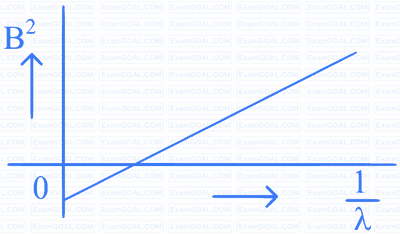Mechanics
Vector Algebra
MCQ (Single Correct Answer)Circular Motion
MCQ (Single Correct Answer)Simple Harmonic Motion
MCQ (Single Correct Answer)Gravitation
MCQ (Single Correct Answer)Electricity
Electromagnetic Waves
MCQ (Multiple Correct Answer)Optics
Wave Optics
MCQ (Single Correct Answer)Modern Physics
Electronic Devices
MCQ (Single Correct Answer)1
WB JEE 2025
MCQ (Single Correct Answer)
+2
-0.5
$10^{20}$ photons of wavelength 660 nm are emitted per second from a lamp. The wattage of the lamp is (Planck's constant $=6.6 \times 10^{-34} \mathrm{Js}$ )
2
WB JEE 2024
MCQ (Single Correct Answer)
+1
-0.25
A beam of light of wavelength $$\lambda$$ falls on a metal having work function $$\phi$$ placed in a magnetic field B. The most energetic electrons, perpendicular to the field are bent in circular arcs of radius R. If the experiment is performed for different values of $$\lambda$$, then $$\mathrm{B}^2$$ vs. $$\frac{1}{\lambda}$$ graph will look like (keeping all other quantities constant)
3
WB JEE 2017
MCQ (Single Correct Answer)
+1
-0.25
When light of frequency v1 is incident on a metal with work function W (where hv1 > W), then photocurrent falls to zero at a stopping potential of V1. If the frequency of light is increased to v2, the stopping potential changes to V2. Therefore, the charge of an electron is given by
4
WB JEE 2016
MCQ (Single Correct Answer)
+1
-0.25
The potential difference V required for accelerating an electron to have the de-Broglie wavelength of 1 $$\mathop A\limits^o $$ is
Questions Asked from MCQ (Single Correct Answer)
WB JEE Subjects
Physics
Mechanics
Electricity
Chemistry
Physical Chemistry
Inorganic Chemistry
Mathematics
Algebra
Trigonometry
Coordinate Geometry



